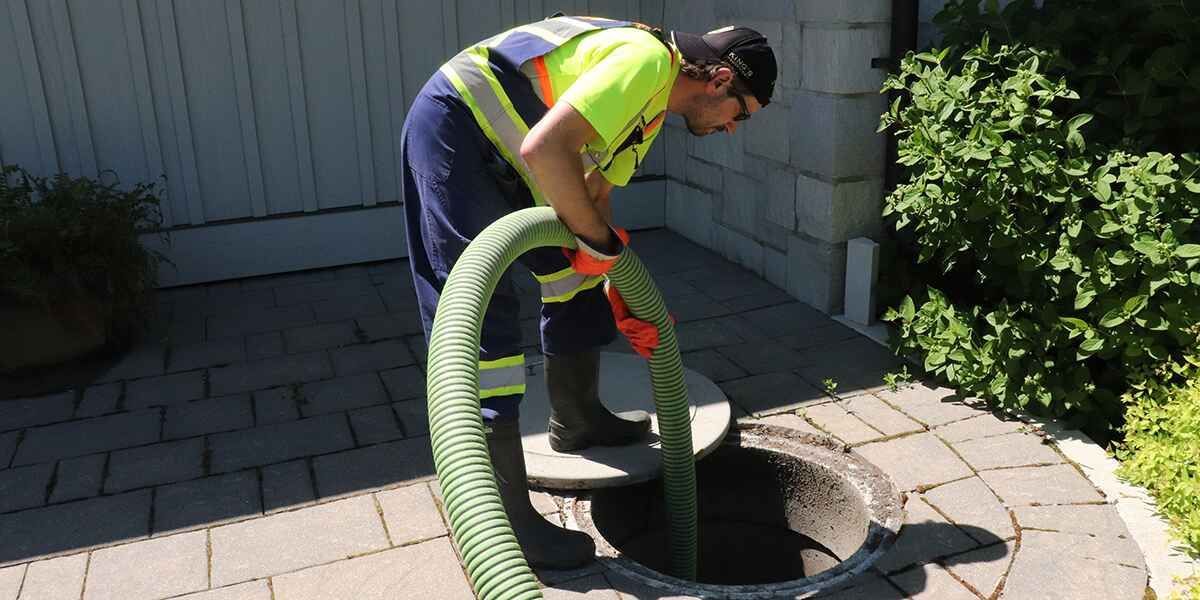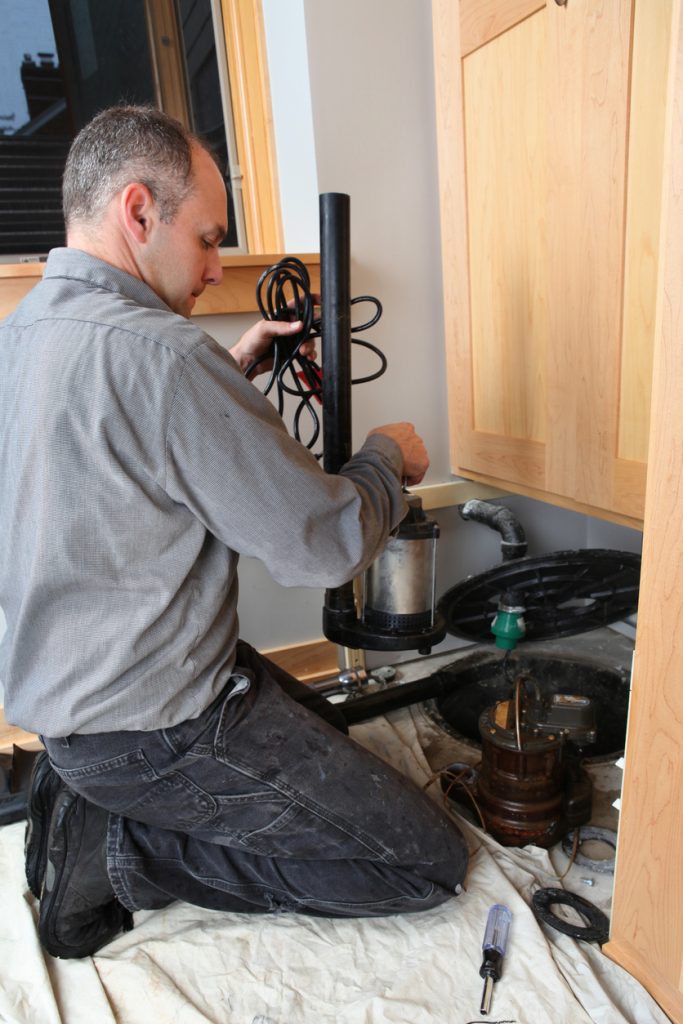Best Steps for Caring for Your Sump Pump
Best Steps for Caring for Your Sump Pump
Blog Article
We have stumbled on this post pertaining to Keep Your Sump Pump Clean, It'll Keep You Dry directly below on the net and concluded it made sense to write about it with you over here.

Sump pumps are important parts in many homes, particularly in areas prone to flooding or excessive dampness. They aid prevent water damages by effectively removing excess water from cellars or crawl spaces. Nevertheless, like any other appliance, sump pumps call for routine upkeep to guarantee they function effectively when needed the most. Cleaning your sump pump is an essential part of its maintenance, and understanding how to do it effectively can conserve you from costly fixings and potential disasters.
Intro
Maintaining a tidy sump pump is vital for its proper performance and long life. Neglecting this vital task can lead to clogs, malfunctions, and ultimately, water damages to your home. For that reason, learning just how to clean up a sump pump is essential for property owners who rely on these gadgets to keep their basements completely dry and protected.
Indications of a Dirty Sump Pump
Recognizing when your sump pump requires cleansing is vital for avoiding possible breakdowns. Some typical indicators that indicate a dirty sump pump consist of strange sounds throughout procedure, minimized water flow, and visible particles in the pit. If you notice any one of these signs and symptoms, it's vital to clean your sump pump immediately to prevent any further concerns.
Getting ready for Cleaning
Prior to you begin cleaning your sump pump, it's necessary to take some safety and security preventative measures. Begin by shutting down the power to the pump to stay clear of any electric accidents. In addition, wear ideal safety gear, such as handwear covers and goggles, to protect yourself from dirt, debris, and prospective virus.
Understanding the Sump Pump
Before diving right into the cleansing procedure, it's necessary to have a fundamental understanding of just how a sump pump works. Generally set up in a pit or basin listed below the basement flooring, a sump pump contains a number of essential components, consisting of a pump, a float switch, and a discharge pipeline. When water gathers in the pit, the float button turns on the pump, which then pumps the water out via the discharge pipe, away from the structure's structure.
Step-by-step Overview to Cleaning a Sump Pump
Shutting down the Power
Begin by detaching the power supply to the sump pump to stop any type of crashes while cleansing.
Looking For Appropriate Performance
Before re-installing the pump, perform a quick test to make certain that the float button turns on the pump correctly. Pour some water into the sump pit and observe the pump's operation. If everything is functioning correctly, you can reassemble the pump and reconnect the power supply.
Removing Particles and Dirt
Utilize a bucket or an inside story to eliminate any type of visible particles, dirt, or debris from the sump pit. Dispose of the debris correctly to stop it from blocking the pump or the discharge pipeline.
Cleaning the Pump and Float Switch Over
As soon as the pit is clear of debris, meticulously remove the pump from the pit. Examine the pump and the float button for any type of signs of damages or wear. Make use of a soft brush or fabric to clean the surface areas and remove any type of collected crud.
Purging the System
After cleaning up the pump and float button, flush the sump pit with clean water to get rid of any staying dirt or debris. This will certainly help make certain that the pump operates efficiently and efficiently.
Maintenance Tips to Keep Your Sump Pump Clean
In addition to routine cleansing, there are a number of maintenance ideas you can follow to keep your sump pump in ideal condition:
Conclusion
Cleaning your sump pump is a crucial facet of its upkeep and ensures that it runs successfully when you need it one of the most. By adhering to the steps described in this guide and integrating routine upkeep into your routine, you can extend the life expectancy of your sump pump and safeguard your home from water damage.
6 STEPS ON HOW TO CLEAN A SUMP PUMP PROPERLY
UNDERSTANDING SUMP PUMPS
Your sump pump plays a crucial role in protecting your home by managing and removing excess water. It primarily functions as a “shield”, guarding your basement against the damaging effects of water accumulation. The pump is housed in a sump pit in the lowest part of your basement, and its job is to pump out any water that collects there.
During heavy rainfalls or when snow melts rapidly, water can infiltrate your basement, posing potential risks like flooding, structural damage, and harmful mold growth. Here, the sump pump springs into action, pumping out the intruding water and directing it away from your home.
SAFETY FIRST
Before cleaning, remember to prioritize safety. Disconnect the sump pump from the power source to prevent any accidental electric shocks. Also, wear sturdy gloves to protect your hands from any sharp or dirty components within the pump.
REMOVE THE SUMP PUMP
After ensuring your safety, the next step is to remove the sump pump from its pit. Doing this might require careful maneuvering as you don’t want to damage any pump components. Once removed, clean the sump pit to remove any accumulated debris or sludge.
INSPECT THE PUMP
Inspect the pump for any visible signs of wear or damage. Check the power cord, float switch, and impeller housing. If any components look worn out or damaged, consider replacing them to ensure optimal performance.
CLEAN THE PUMP
Thoroughly clean the pump with warm, soapy water. Make sure to rid it of any dirt, gravel, or other debris that might impede its performance. You can use a toothbrush to clean the small, hard-to-reach parts of the pump.
REINSTALL THE SUMP PUMP
Reinstall the pump into the sump pit Make sure it’s positioned correctly to remove the water effectively Once it’s back in place, reconnect it to the power source TEST THE PUMP
Finally, pour some water into the pit to ensure the pump works correctly. It should start automatically and begin pumping out the water; if it doesn’t, check the power source and the positioning of the pump.
Remember, while cleaning your sump pump is an essential part of home maintenance, hiring a professional plumber for a thorough inspection and cleaning at least once a year is also important. This will ensure that your pump is in optimal condition, ready to protect your home from potential water damage.
BEST PRACTICES FOR CLEANING SUMP PUMP DISCHARGE PIPES
Regular Inspection: Regularly inspect your discharge pipes, especially during heavy rainfall or snowmelt periods. Look for any signs of blockage or damage. Early detection of problems can prevent serious issues down the line. Periodic Cleaning: Over time, sediment and debris can accumulate in the discharge pipes, impeding the flow of water. Regular cleaning helps keep the pipes clear and functioning efficiently. You can use a high-pressure water jet to effectively clean the pipes. Insulation During Winter: In colder climates, discharge pipes can freeze, blocking the outflow of water. Protect your discharge pipes from freezing temperatures by insulating them with foam pipe insulation. This will ensure the sump pump can continue to discharge water even in freezing conditions. Proper Positioning: The discharge pipe should be positioned to direct water away from your home’s foundation. Improper positioning can lead to water seeping back into the basement. Ensure the pipe is long enough and angled correctly. Installation of a Check Valve: A check valve prevents water from flowing back into your sump pit after the pump has pushed it out. Installing a check valve helps maintain the efficiency of your sump pump and reduces the risk of flooding. Minimize Pipe Turns: Every curve or turn in the discharge pipe can decrease the efficiency of water flow. By minimizing turns and bends in your discharge pipe, you can increase the efficiency of your sump pump. https://www.fullspeedplumbing.com/how-to-clean-a-sump-pump-properly9999/

I recently found that blog posting on Cleaning & Maintenance Tips for Your Home's Sump Pump when perusing the internet. Enjoyed reading our content? Please share it. Let others find it. We love reading our article about Cleaning & Maintenance Tips for Your Home's Sump Pump.
Explore Report this page